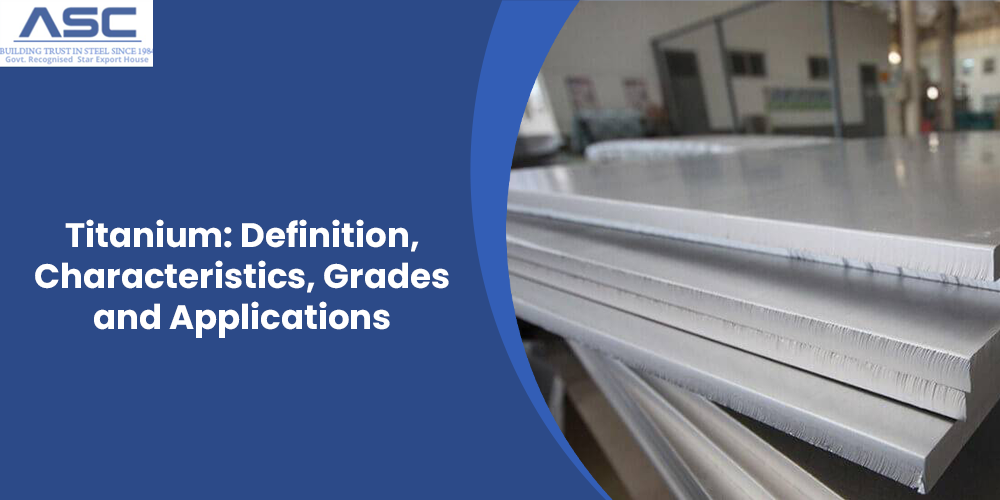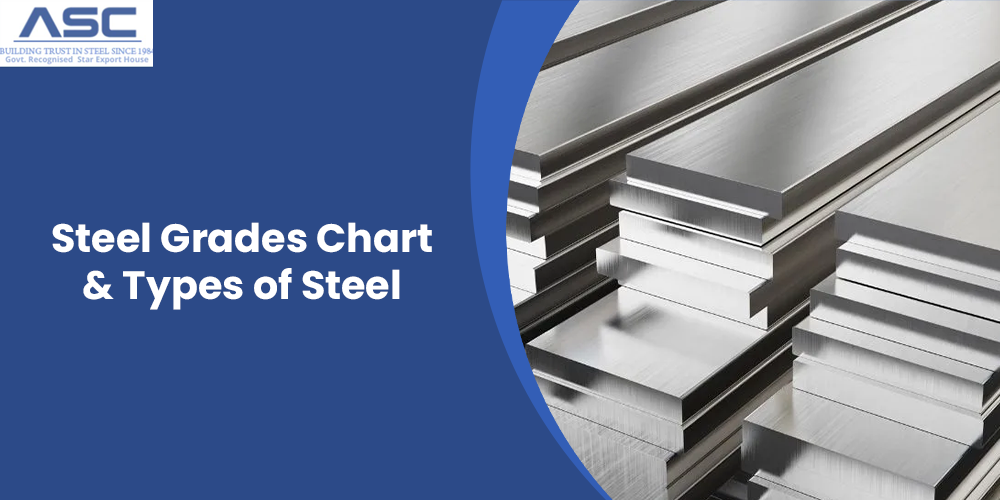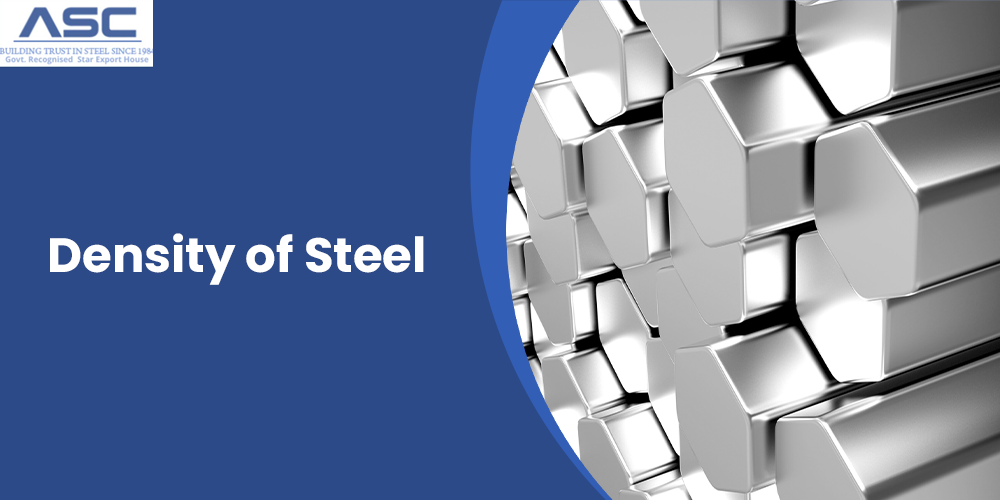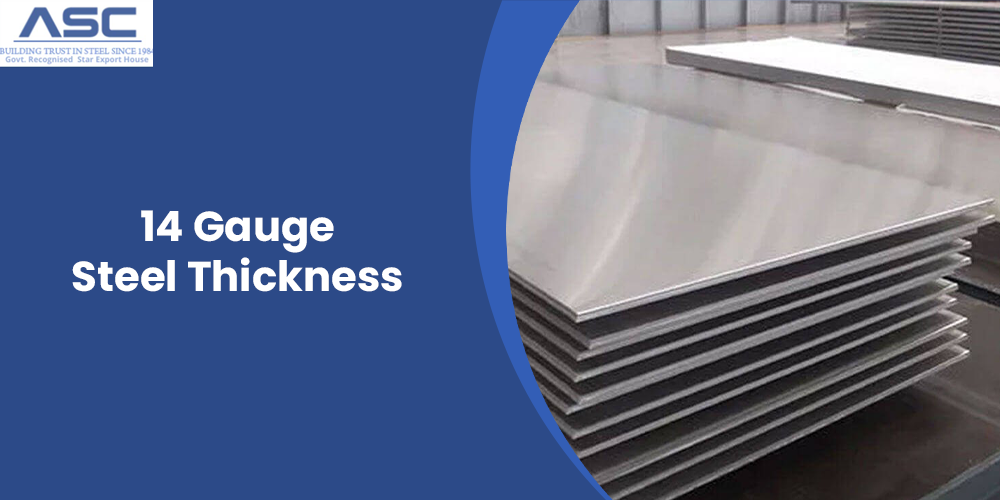Titanium: Definition, Characteristics, Grades, and Applications
by AMC
Posted on August 13, 2024 at 12:40 PM

Titanium is a silver-white metal known for its high strength, light weight, and ability to resist corrosion. These valuable qualities make it a popular choice in many industries, including aerospace, automotive, medical, and chemical processing. There are various grades and alloys of titanium, each with specific properties that suit different uses.
This article will define titanium, outline its characteristics, explore the different grades and alloys, and discuss the wide range of applications where titanium is used.
What Is Titanium?
Titanium is a silver-white metal with the atomic number 22. Known for its lightweight, flexibility, strength, and resistance to corrosion, titanium has a high strength-to-weight ratio, making it highly valuable in various applications. It is also biocompatible, meaning it works well with the human body, which is why it's often used in medical implants. Titanium is the 9th most abundant element on Earth and is usually found in rocks, clay, and sand. The primary commercial sources of titanium are the minerals rutile and ilmenite.
Titanium is classified into three main types of alloys: alpha, beta, and alpha-beta alloys. Alpha alloys are mixed with oxygen, while other metals like aluminum, molybdenum, and vanadium are often added to improve properties such as strength, corrosion resistance, and weight reduction.
Titanium and its alloys are widely used in many fields, including aerospace, commercial industries, power plant condensers, desalination plants, marine environments, architecture, medical implants like joint replacements, and even consumer products such as golf clubs and bicycle frames.
What Is the Origin of Titanium?
Titanium was first discovered in 1791 by William Gregor, an English chemist and mineralogist. A few years later, in 1795, the element was named "titanium" by German chemist Martin Heinrich Klaproth, after the Titans of Greek mythology. Despite its early discovery, it wasn't until 1910 that pure titanium was successfully obtained. This achievement was made by M. A. Hunter, a scientist at Rensselaer Polytechnic Institute, who isolated the metal by heating titanium tetrachloride (TiCl4) with sodium under high pressure and temperature, resulting in pure titanium and sodium chloride as a byproduct.
In 1932, William Justin Kroll further advanced titanium production by isolating it through the reduction of TiCl4, first using calcium, and later with magnesium and sodium. This method, known as the “Kroll Process,” remains the primary method for commercially producing titanium today.
What Is Another Term for Titanium?
Titanium is often called the "Wonder Metal" or the "aerospace metal" due to its remarkable properties, making it highly valuable in aerospace applications. Its low density, flexibility, high tensile strength, and resistance to corrosion are key characteristics that have earned it these nicknames.
What Is Titanium Made Of?
Titanium is not found in its pure form in nature because it readily reacts with oxygen. Instead, it exists in the form of titanium dioxide, which is present in nearly all rocks, clay, sand, and minerals on Earth. The primary minerals used for commercial titanium production are rutile and ilmenite. Other minerals, such as anatase, perovskite, brookite, and titanite, also contain titanium. These minerals can be refined to extract pure titanium.
How Is Titanium Made?
The most common method for producing pure titanium is the Kroll Process. It starts by heating ores like rutile or ilmenite to create liquid titanium tetrachloride (TiCl4). This liquid is then purified through fractional distillation, similar to the process used to refine gasoline from crude oil. After purification, molten magnesium is added to the TiCl4, resulting in a porous titanium "sponge" and a magnesium-based salt. The titanium sponge is then compressed and melted in an arc furnace. Finally, the pure titanium is cast into ingots. If alloys are needed, other metals can be mixed with the molten titanium before casting into ingots.
Chemical Compositions of Titanium
| Chemical Data | |
|---|---|
| CAS number | 7440-32-6 |
| Thermal neutron cross section | 5.6 barns/atom |
| Electrode potential | 0.20 V |
| Ionic radius | 0.680 Å |
| Electro negativity | 1.54 |
| X-ray absorption edge | 2.497 Å |
| Electrochemical equivalent | 0.4468 g/A/h |
Titanium Physical Properties
| Properties | Metric | Imperial |
|---|---|---|
| Density | 4.50 g/cm3 | 0.163 lb/in3 |
| Melting point | 1650-1670 °C | 3000-3040 °F |
| Boiling point | 3287 °C | 5949 °F |
Titanium Mechanical Properties
| Properties | Metric | Imperial |
|---|---|---|
| Tensile strength | 220 MPa | 31900 psi |
| Modulus of elasticity | 116 GPa | 16800 ksi |
| Shear modulus | 43.0 GPa | 6240 ksi |
| Hardness, Brinell | 70 | 70 |
| Hardness, Vickers | 60 | 60 |
| Elongation at Break | 54% | 54% |
| Poissons Ratio | 0.34 | 0.34 |
Titanium Thermal Properties
| Properties | Metric | Imperial |
|---|---|---|
| Thermal expansion co-efficient (@20-100°C/68-212°F) | 8.90 µm/m°C | 4.94 µin/in°F |
| Thermal conductivity | 17 W/mK | 118 BTU in/hr.ft².°F |
What Are the Key Features of Titanium?
Titanium's properties vary depending on the grade and specific alloy, but some general characteristics include:
- Corrosion Resistant: Titanium resists corrosion from seawater, chlorine, and many other corrosive agents, making it valuable in marine and chemical processing applications.
- Lightweight: With a low density compared to many metals, titanium is ideal for use in lightweight structures and components in the aerospace and automotive industries.
- High Strength: Titanium is as strong as steel but weighs about 45% less, making it highly useful in aerospace, automotive, medical, and marine applications due to its excellent strength-to-weight ratio.
- Biocompatible: Titanium is the most biocompatible metal, resistant to corrosion by bodily fluids, capable of integrating with bone (osseointegration), and has a high cyclic fatigue limit. This makes it perfect for bone, joint, and dental implants.
- Heat Resistant: Titanium has low thermal conductivity, making it suitable for high-heat applications such as machining, spacecraft, jet engines, missiles, and automobiles.
- Nonmagnetic: Titanium is nonmagnetic but becomes paramagnetic in a magnetic field.
- Ductile: Titanium's ductility improves with increased temperatures, and alloying it with other ductile metals like aluminum enhances this property further.
- Low Thermal Expansion: Titanium does not expand or contract as much as other materials, such as steel, at extreme temperatures. This makes it ideal for structural applications that face high temperatures, like aerospace, spacecraft, and even large buildings in case of fire.
- Excellent Fatigue Resistance: Titanium has outstanding fatigue resistance, making it ideal for aerospace applications where parts like landing gear, hydraulic systems, and exhaust ducts undergo cyclic loading.
What Is the Color of Titanium?
Titanium naturally has a silvery-gray or silvery-white color. However, it can display a wide range of colors when anodized. By adjusting the voltage during the anodization process, titanium can be made to reflect different colors across the spectrum.
What Does Titanium Look Like?
Titanium is typically extracted from minerals found in igneous and sedimentary rocks. The two primary minerals used for extraction are ilmenite and rutile. Ilmenite is a grayish-black rock, while rutile appears as a dark brown to black rock with a crystal-like structure.
Common Grades of Titanium
Titanium comes in various grades, such as 1. Grade 11, Grade 12 or Ti 0.3-Mo 0.8-Ni, Grade 4, Grade 5 or Ti 6Al-4V, Grade 7, Grade 1, Grade 3, Grade 6 or Ti 5Al-2.5Sn, Grade 23 or Ti 6AL-4V ELI.
Which Grade of Titanium Is Best?
Grade 5 (Ti 6Al-4V) titanium is considered the best and most versatile grade due to its combination of high strength, ductility, corrosion resistance, thermal stability, and formability. These properties make it ideal for a wide range of industries and applications, including automotive, aerospace, sporting goods, and consumer products.
What Is the Price of Titanium?
Commercially pure titanium typically costs around $18-$20 per kilogram, while titanium alloys are priced higher, at approximately $70-$80 per kilogram.
What Is the Cheapest Titanium Grade?
Grade 2 titanium is the most affordable titanium grade, as it is the most commonly used commercially pure titanium. Its widespread use results in high production volumes, which helps lower its price.
What Are the Properties of Titanium?
Titanium exhibits a range of properties depending on its specific alloy composition:
- Electrical Resistivity: Titanium’s electrical resistivity varies between 51 μΩ/cm (for Ti-0.8Ni-0.3Mo) and 198 μΩ/cm (for Ti-8Al-1Mo-1V).
- Thermal Conductivity: The thermal conductivity of titanium ranges from 6 W/mK (for Ti-6Al-2Sn-4Zr-2Mo) to 22.7 W/mK (for Ti-0.8Ni-0.3Mo).
What Are the Applications of Titanium?
Titanium's unique properties make it essential in various industries. Here are some common applications:
- Jewelry: Titanium is used to create piercings, wristwatches, necklaces, rings, and other items due to its durability, light weight, and corrosion resistance. It's also popular among those with metal allergies and is sometimes alloyed with gold to create more durable 24-karat gold jewelry.
- Medical: Titanium's high strength, fatigue resistance, and biocompatibility make it crucial in the medical field. It's commonly used in surgical and dental tools, implants, and joint replacements. Titanium's ability to integrate with bone (osseointegration) ensures strong, long-lasting implants and prosthetics.
- Industrial: Titanium is widely used in industrial settings for its strength, corrosion resistance, light weight, and durability. It's found in heat exchangers, tanks, reactors, valves, pipes, and pumps.
- Aerospace: Titanium is a key material in aerospace, making up nearly 50% of an aircraft's weight. It's used for critical parts like landing gear, firewalls, and hydraulic systems, valued for its low density, high strength-to-weight ratio, and resistance to corrosion and fatigue.
- Architectural: Titanium is favored in architecture for glass frames, facades, roofs, interior walls, and ceilings due to its lightweight, strength, corrosion resistance, and durability.
- Composites: Recently developed titanium-based composites utilize the metal's strength and lightweight to create reinforced materials with higher stiffness, wear resistance, and strength. These composites are increasingly used in aerospace and automotive applications.
- Automotive Industry: Titanium is used to manufacture engine parts, exhaust systems, suspension systems, and automotive frames. Its low density, high strength, and heat resistance improve vehicle performance and manufacturing efficiency.
- Chemical Processing: Titanium is essential in chemical processing for its corrosion resistance and stability at lower temperatures. It's commonly used in pipes, flanges, tubing, tanks, pumps, and heat exchangers.
What Are the Benefits of Titanium?
Titanium offers several key benefits that make it valuable across various industries:
- High Strength: Titanium is one of the strongest metals, with an excellent strength-to-weight ratio, surpassing even aluminum. Its combination of strength and low weight makes it a preferred choice in many applications.
- Corrosion Resistance: Titanium is naturally resistant to corrosion, thanks to its ability to form a protective titanium oxide layer when exposed to air. This layer shields the metal from corrosive substances, making it ideal for construction and marine environments.
- Biocompatible: Titanium is nontoxic and compatible with both humans and animals, making it a common material in the medical and dental fields for implants and surgical instruments.
- High Melting Point: With a melting point of around 3,034 °F, titanium is well-suited for high-temperature applications such as jet engines, rockets, power plants, and foundries.
- Versatile Fabrication Methods: Despite its strength, titanium is soft and ductile, allowing it to be fabricated using various manufacturing processes like machining, forming, rolling, casting, and welding.
Is Titanium Rust Proof?
Yes, titanium is rust-proof. Rust forms when iron reacts with air to create iron oxide, but since titanium contains no iron, it does not rust. When exposed to air, titanium forms a protective layer of titanium oxide, which shields it from corrosion caused by acids, alkalis, saltwater, and other substances. Only in extreme conditions, such as exposure to acids at high temperatures, might titanium corrode.
Is Titanium Magnetic?
Titanium is considered a paramagnetic metal, meaning it is weakly attracted to magnetic fields. However, it is not as strongly magnetic as ferromagnetic materials like iron, steel, and nickel.
Summary
This article introduced titanium, explained its properties, and explored its various applications. For more information about titanium, you can reach out to an Amardeep Steel representative.
Amardeep Steel offers a broad range of manufacturing services and value-added solutions for your prototyping and production needs. Visit our website to learn more or request a free, no-obligation quote.

Types of Steel & Steel Grades Chart
Steel is one of the most useful materials in the world. At its most basic, steel is made of iron and carbon. However, steel is more complex than it seems. The amount of carbon and iron, or the addition of other elements, changes the properties.

